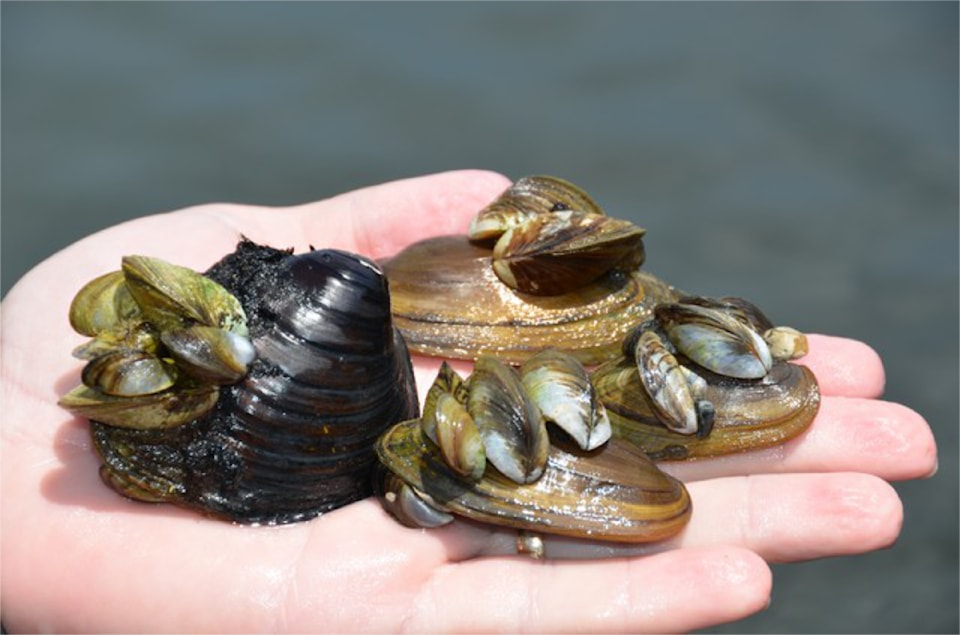The Idaho State Department of Agriculture confirmed this week that chemical treatment of a portion of the Snake River has failed to eradicate a detected invasive quagga mussel population.
In a press release issued Sept. 24, the state department says following the introduction of 116,000 litres of Copper Chelate pesticide last fall into a section of the river, while the population has declined there still remains quagga mussel reproduction detection in the river.
"In 2023, the ISDA implemented a treatment of the river with a chelated copper product. It was the first treatment of this type and scale ever attempted in North America," stated the news release.
"Sampling results indicate the chelated copper treatment was effective in reducing the mussel population."
However ongoing mussel surveying in the treated area of the Snake River has revealed positive mussel findings in the Shoshone Falls pool, Pillar Falls and the Twin Falls River Reservoir behind the Twin Falls hydroelectric facility.
"Since 2023, the ISDA has taken nearly 300 samples in the affected stretch of the (Snake River) and over 3,000 samples statewide throughout the 2024 season, doubling routine monitoring samples for the year. Current sample results show a decreased quagga mussel presence in the affected river stretch compared to the pre-treatment survey in 2023," said ISDA in the release.
In his report to the Okanagan Basin Water Board for its Oct. 1 meeting, interim executive director James Littley noted, "This finding reinforces what we have seen in several areas, that once invasive mussels are in a system, they're almost impossible to eradicate."
Littley said the Snake River is a tributary to the Columbia River, entering downstream of the confluence of the Okanagan River, but still in the same system as the Okanagan.
"While watercraft from Idaho are currently treated as 'High Risk' by the province of B.C. if these mussels spread downstream, they will travel into the Columbia River entering both Oregon and Washington states," he stated.
He says the Snake River results also reinforce the call of the OBWB, supported by other water and environment stakeholders, for mandatory inspections, to introduce a temporary boat ban from out of province and to establish an invasive mussel-free zone in partnership with Alberta and Saskatchewan.
Meanwhile, the ISDA is planning another treatment for the affected stretch of the Snake River, and the agency does not expect major impacts on the public.
Access to the Snake River at Centennial Park remains open with mandatory inspection and decontamination steps in place for all watercraft.
The river section from Pillar Falls to Twin Falls remains closed, and an additional temporary closure from Pillar Falls to Auger Falls will take place in mid-October for about 15 days to facilitate the second river chemical treatment.
The significance of introducing Copper Chelate into the river system is while it's intended to treat the invasive quagga mussels, it also kills off much of the ecosystem and other fish in the river.
Quagga mussels spread rapidly and clog pipes that deliver water for drinking, energy, agriculture, recreation and a variety of other uses. They also can negatively affect fish populations and wildlife habitat.
If left to spread untreated, they form dense colonies that damage and hinder infrastructure so severely that the state of Idaho estimates it would result in hundreds of millions of dollars in actual and indirect costs.
A recent B.C. government economic impact report states an invasive mussel infestation would cost the province from $64 million to $129 million annually - the impact felt on hydro facilities, irrigation infrastructure, municipal water treatment facilities, domestic water intakes, losses in property values and recreational boating tourism.
In response to the report release, the OBWB noted the absence of costs related to the local fishery and the quality of life that will be lost as well.
"(An economic study) cannot quantify the harm the mussels will cause the populations of sockeye and Chinook salmon, that are being restored from the brink of extinction by the efforts of the Okanagan Nation Alliance and their partners," said an OBWB statement in response to the study last year.
"It cannot quantify the losses of health and environmental quality of our beautiful lake system - also a critical source of drinking water to a growing population."



